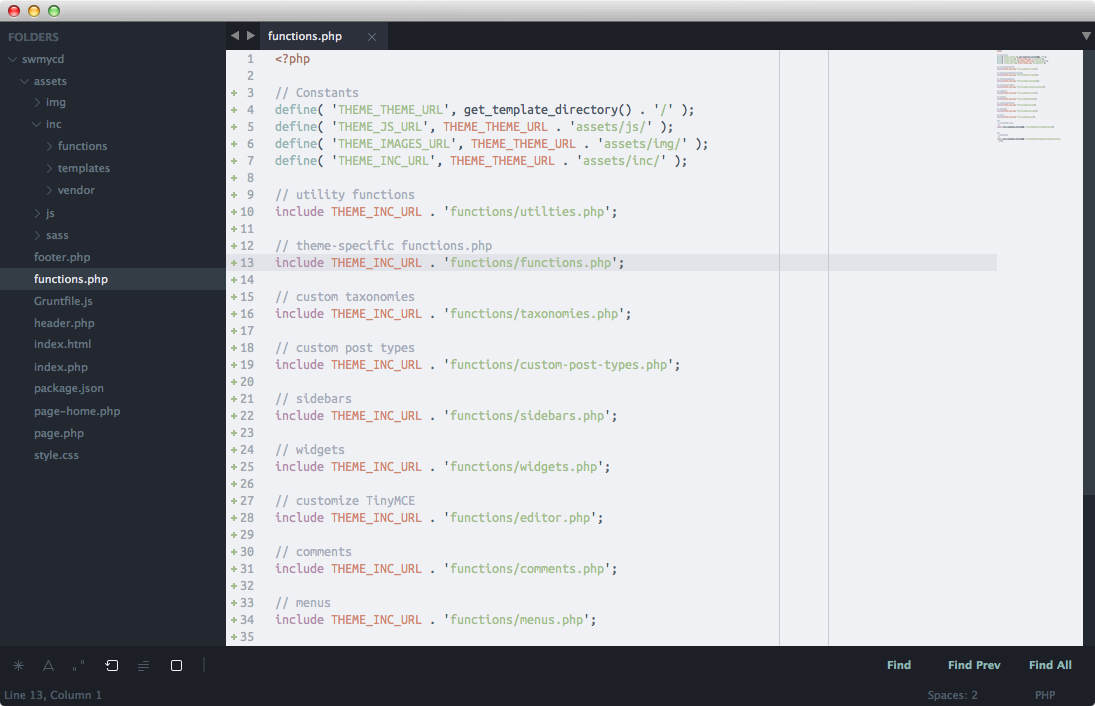How I structure WordPress themes
I know what you’re thinking … “A WordPress post?! I thought this guy drank the Ruby on Rails Kool-Aid.” Truth is, I never really stopped WordPress development, I was simply looking to expand my horizons a bit. I still use WordPress daily for personal blogs and work-related activites. It’s good at its job, which is either as a blog or an easily extendable CMS-like solution. Anyways … in developing my WordPress themes, I try to keep everything as modular as possible. Here’s my general file structure for anything not WordPress-centric:
|- assets/ |- img/ |- inc/ |- functions/ |- templates/ |- vendor/ |- js/ |- sass/
This is of course a high-level overview, but let me explain a bit: - the assets folder holds all theme-related images, includes, JavaScript and Sass files. - the img folder holds all images
- the inc folder holds all PHP includes
- the functions folder holds all theme-centric functions. More on this folder in a bit.
- the templates folder holds all theme-centric templates to keep everything DRY
- the vendor folder holds all plugin / framework related things that I’ve accumulated over the years to help with development (WPAlchemy, etc)
- the js folder holds all JavaScript
- the sass folder holds all Sass files, again, to keep everything modular
The functions folder
Here’s where things get a little more in-depth. First, everyone reading this will know that WordPress requires a functions.php file in the top level of a theme directory. Usually, people will add all of their theme configuration options to this file, resulting in a file hundreds of lines long. I’d rather write code than dig through it, so I extracted everything out into its own relevant file placed in the aforementioned functions folder. That said, here’s my functions.php:  I won’t be going over the screenshot in depth, but the gist is simple: first, I define any constants I’ll be using a lot in my theme. Next, I have a series of includes that hold relevant code for their name. So, if I create any custom posts? In custom-post-type.php it goes. That ensures I always know where my code lies, even if I come back to the project 6 months down the road. I know this was a quick and dirty post, but I hope it helps anyone struggling to maintain a clean directory structure in the face of an ever-evolving theme!
I won’t be going over the screenshot in depth, but the gist is simple: first, I define any constants I’ll be using a lot in my theme. Next, I have a series of includes that hold relevant code for their name. So, if I create any custom posts? In custom-post-type.php it goes. That ensures I always know where my code lies, even if I come back to the project 6 months down the road. I know this was a quick and dirty post, but I hope it helps anyone struggling to maintain a clean directory structure in the face of an ever-evolving theme!